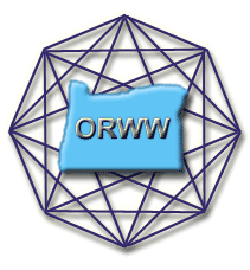
PROTOCOL
One of the key goals of Oregon Websites and Watersheds Project, Inc. (ORWW) is to help foster improved Internet communications via a common and efficient system of protocol involving formal and informal selections of software, online etiquette, and other aspects of transferring information and ideas via the World Wide Web (www).
We put our first ORWW protocol page online January 15, 1997. The hardware and software recommendations are almost laughable by today's standards - less than 10 years later - but the page forms an important landmark for a website that has operated continuously, built mostly by Oregon school students from the 2nd Grade through grad school, from that time until now.
At this time (2006) most Internet software is widely used and known. Dependency on proprietary software (you have to buy it) is understood, and several such products as Dreamweaver, MicroSoft Word, ArcInfo, and PhotoShop have been added to the ORWW toolkit. One type of freeware that is not widely distributed at this time, yet is extremely valuable for navigating landscape-scale photography via the Internet, is called "QTVR". The following links and instructions allow for free, quick, and safe downloading to either pc or macintosh operating systems, and some basic start-up exercises to learn how it's operated. A mouse and two keys.
QTVR
|
NOTE (December 15, 2010): There has been some difficulty with QTVR panoramic files made for this project, in that some browsers or platforms are importing grainy, undersized files that cannot be expanded to fit the screen. This has not been a problem in the past, and we are working to fix the problem at this time.
QTVR (QuickTime Virtual Reality) files allow the viewer to interact with a panoramic image by using their computer's mouse and two keys on the keyboard. Sliding the mouse left, right, up, or down creates corresponding movement in the image, including complete 360-degree panoramas. Using the shift (zoom in) and control (zoom out) buttons gives additional control, allowing the viewer to focus on any object in the panorama and magnify its image. Viewing a QTVR virtually puts the viewer in the exact location that the photographer was in when the panorama was created.
If aerial or landscape-scale panoramic photo sequences can reasonably be described as "highly detailed maps of an area at an exact point in time" - which is actually a very good definition - then QTVR panoramas can reasonably be defined as "televising an historical landscape from a short period of time with a telephoto lens." Better descriptions welcomed and may see print.
PRACTICE ROUND
The panoramic photo sequence below is linked to a QTVR file. Open by double-clicking with your mouse. Then take 30 seconds or so to try the following three (3) maneuvers:
Mouse Use cursor to move up & down, back & forth, 'round & 'round ("360").
Shift Zoom in on image, as directed by Mouse.
Control Zoom back in from Shift.
![]()
Dan Bregar and his Crescent Valley HS field biology class
observe the differences in Douglas-fir, Brachypodium, and exotic blackberries
along the eastern property boundary of the Brandis
Oaks Savannah Restoration Project in north Corvallis, Oregon.
Photo sequence by Nana Lapham, ORWW, March 31, 2005.
© 1997, 2006, 2010 by Oregon Websites and Watersheds Project, Inc.